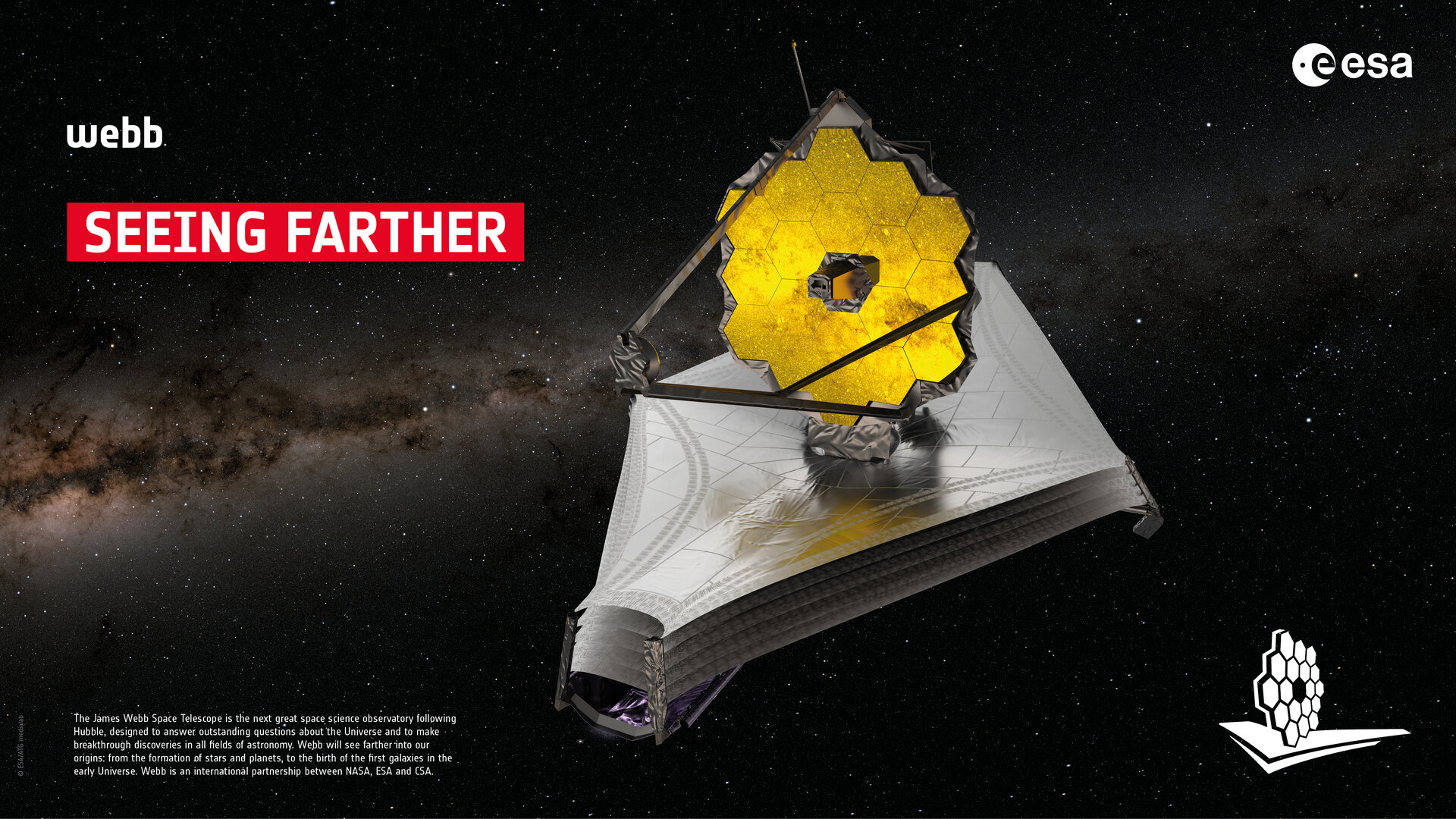Webb’s Universe
The James Webb Space Telescope was launched almost a year ago.
In July, the first images were released.
Now seems to be a good time to assess the telescope’s performance so far.
This blog gives my early impressions of Webb’s Universe.
We’ll do it by looking at images that I find most interesting.
Solar System
Neptune
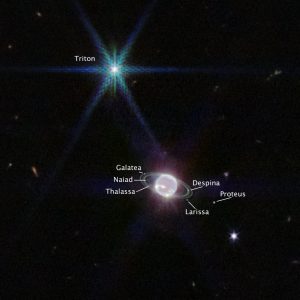
Neptune and moons. Image: NASA, ESA, CSA, and STSc
Webb’s Near Infra-red camera, NIRCam, captured this image of Neptune.
The image clearly shows the thin rings of the ice giant planet together with seven of its fourteen moons.
The rings are not visible with Earth-bound telescopes.
Atmosphere of Mars
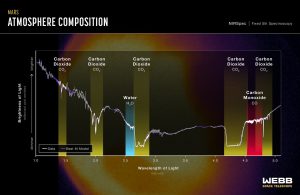
Martian atmosphere. Image: NASA, ESA, CSA, STScI, Mars JWST/GTO team
The Near-Infrared spectroscope, NIRSpec, analysed the atmosphere of Mars.
The dominant gas is carbon dioxide, along with carbon monoxide and traces of water vapour.
This kind of spectroscopic study may reveal the nature of exoplanet atmospheres.
It may provide the first hints of life on a distant world.
Milky Way
Exoplanet
We’ll move on to objects outside our Solar System as seen by Webb.
Let’s begin with an exoplanet, WASP-96b.
Webb has produced the most detailed atmospheric spectrum of any exoplanet so far.
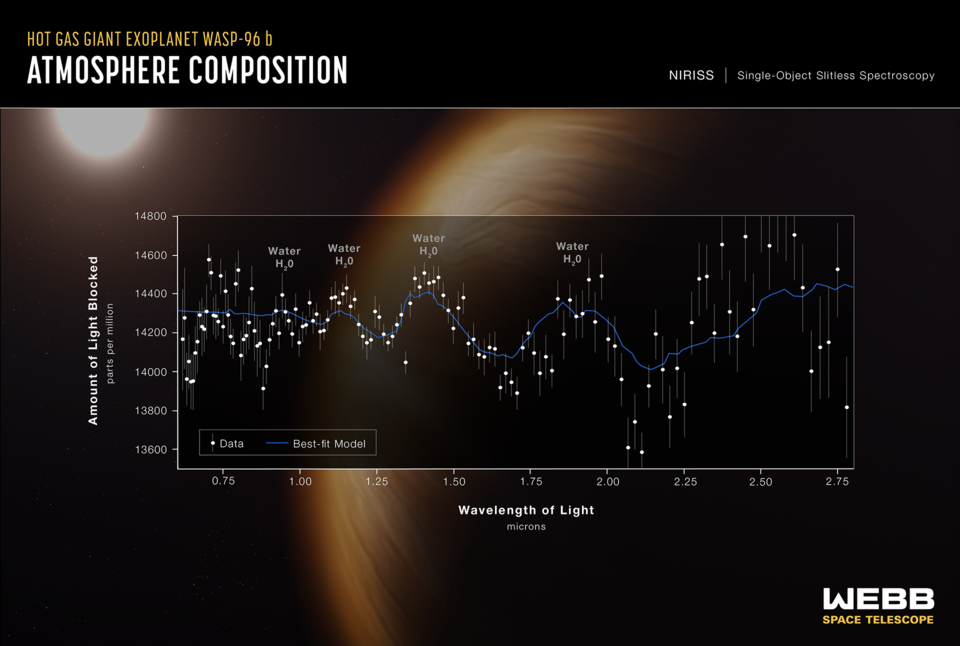
WASP-96b spectrum. NASA/ESA/CSA JWST
WASP-96b was discovered in 2013 by the Wide Angle Search for Planets team.
It is a gas giant planet about half the size of Jupiter.
It orbits star WASP-96 in 3.5 days at a distance much closer than Mercury is to our Sun.
Its surface temperature is around 1000 C.
Webb’s near infrared spectroscope, NIRISS, analysed the atmosphere and found water molecules there.
Although WASP-96b is too hot for liquid water, this image shows that Webb is capable of finding liquid water on an exoplanet.
And with that water may come alien life.
Cosmic Cliffs

Cosmic Cliffs Credits: NASA, ESA, CSA, and STScI
The Cosmic Cliffs are part of the Carina Nebula, NGC 3324.
It is one of Webb’s most spectacular images of the year.
It lies over 7,000 light years away.
Hot new stars like those in the upper part of the image carved out hollows in the wall of dust.
Pillars of Creation
The Pillars of Creation were made famous by the Hubble Space Telescope.
Webb shows the Pillars in even more incredible detail.
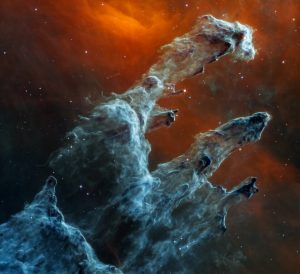
Pillars of Creation, Webb. Credit: NASA/ESA
Our first image shows the Pillars through MIRI, Webb’s Mid-Infrared Instrument.
It shows interstellar dust surrounding the columns of gas and thick dust.
The Pillars are around 5 light years tall.

Pillars of Creation, Webb. Credit: NASA/ESA
Webb’s Near Infrared Camera, NIRCam, took the second image.
Now the stars around the Pillars come into view.
The red glows come from material thrown out by newly born stars in the gas clouds.
The Pillars of Creation are a small part of the Eagle Nebula, M16, which lies 4,500 light years away.
Deep Space
Colliding Galaxies
Webb looked at IC 1623, a pair of galaxies in collision 270 million light years away.
The collision ignited a frenzy of star birth in areas which show up well in infrared light.

Merging galaxies, IC 1623 NASA/ESA/CSA JWST
These merging galaxies may produce a supermassive black hole.
Dust prevented Hubble from seeing these galaxies clearly.
Webb, with its infrared eyes, can see through the dust.
Webb Deep Field
The first Webb Deep Field was made from a series of images taken over a 12.5 hour period.
The area of sky in the image is equal to the size of a grain of sand held at arm’s length!
The objects with spikes are stars in our own Milky Way galaxy.
These diffraction spikes result from the struts holding the telescope’s secondary mirror.
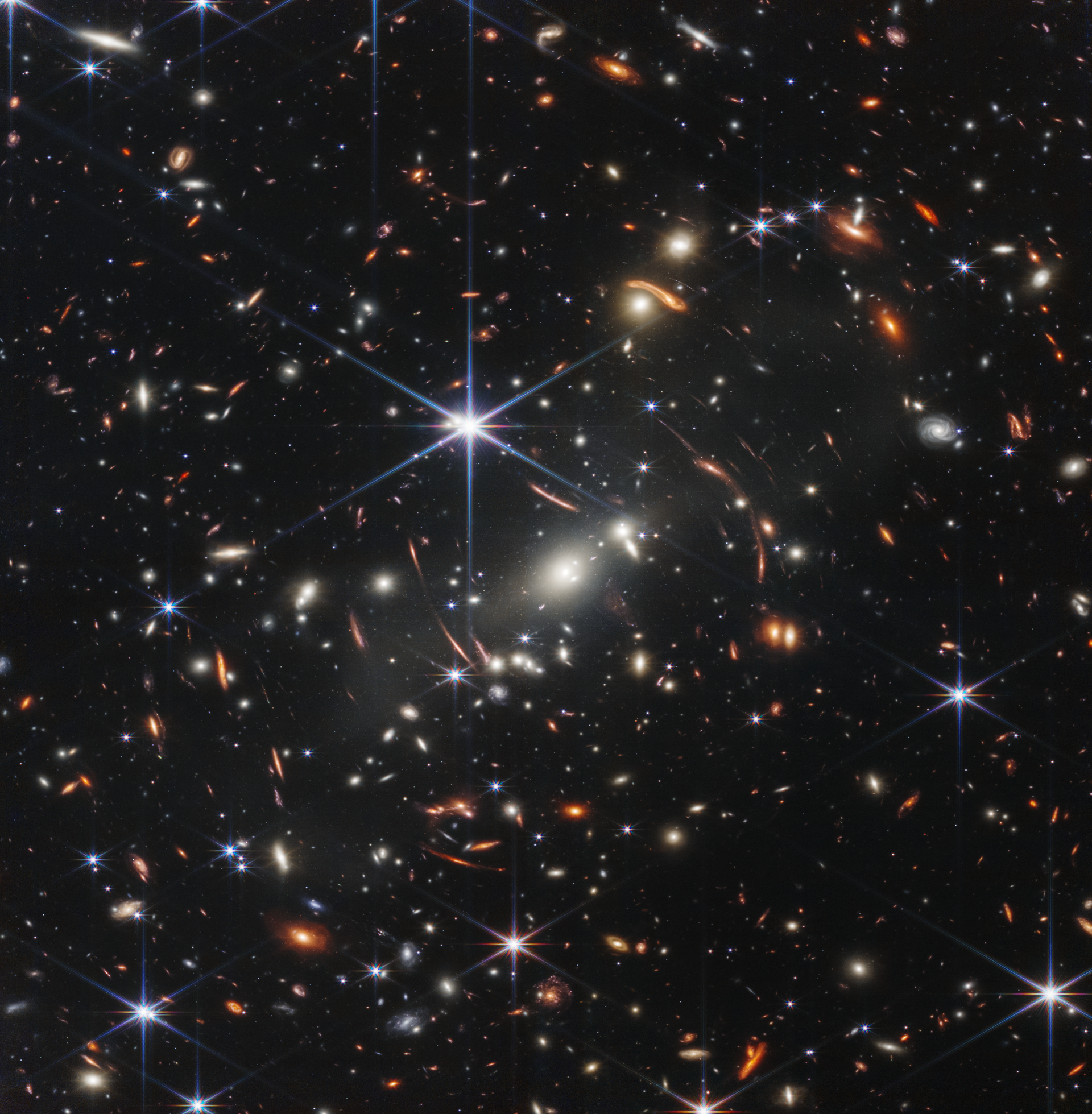
Webb First Deep Field NASA/ESA/CSA JWST
There is a cluster of white galaxies near the middle of the image.
Their gravity is bending the light from galaxies hidden behind the cluster.
These galaxies appear as elongated arches around the cluster.
Beyond the cluster, other galaxies are stretched by the gravity of nearby star cities.
Neat spiral galaxies appear in the image but those furthest away, the dimmest, seem to have no structure.
These are the most distant and consequently the youngest star cities yet seen.
The youngest galaxies
Young galaxies feature in our final image of Webb’s Universe.
Another image looked deep into the cosmos, towards a galaxy cluster known as Abell 2724.
Webb scientists picked out two tiny specks of light, numbered in the image.
These small blurs of light are the youngest and most distant star cities ever seen.
Galaxy 1 formed about 450 million years after the Big Bang.
Galaxy 2 was created only 350 million years after the beginning of the universe.
The Big Bang created the universe some 13.8 billion years ago.
These two galaxies were made, in cosmic terms, soon after.
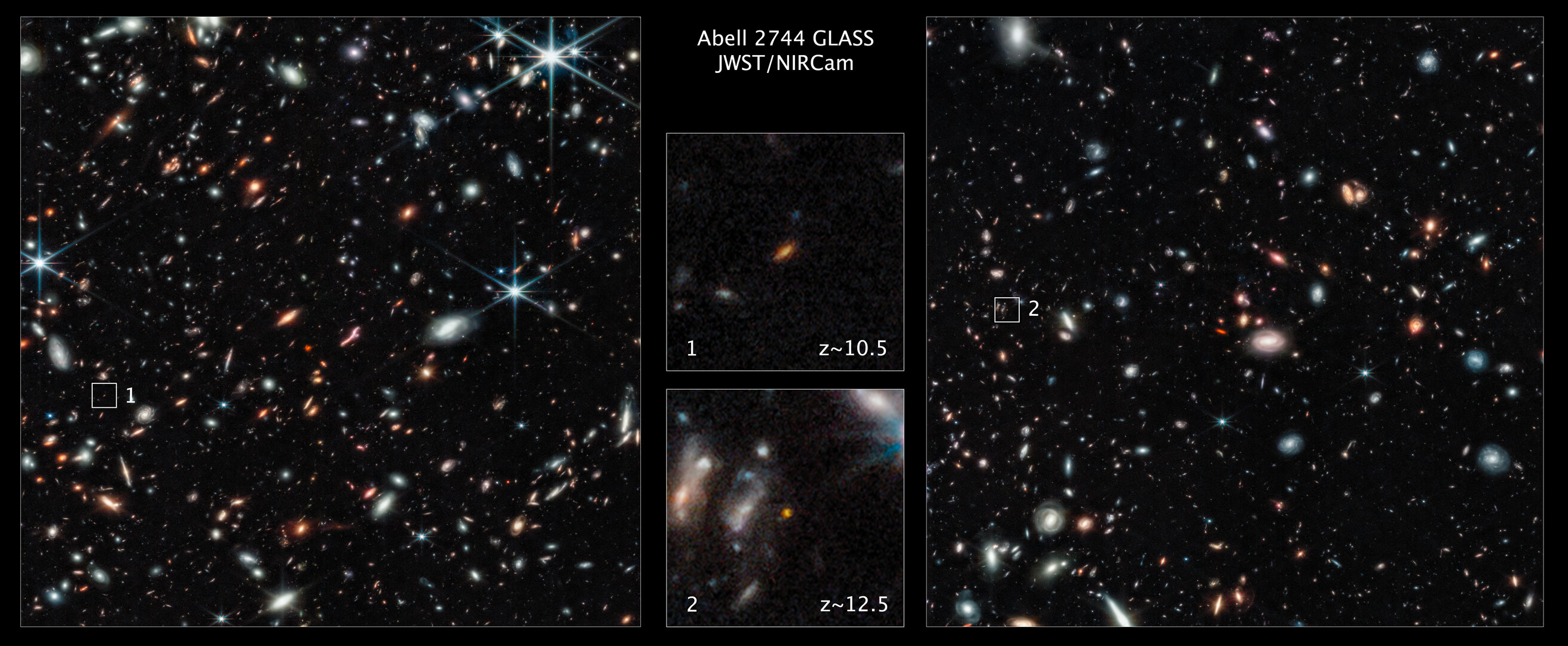
Abell 2744 NASA/ESA/CSA JWST
Webb’s Universe future
It is already clear that the James Webb Space Telescope will give us unrivalled views of the universe.
Webb’s observations will take in our Solar System, our own galaxy and out to the edge of space.
That journey will both enhance and alter our understanding of the universe.
Watch this space!
The author: Dennis Ashton is a Fellow of the Royal Astronomical Society and a Wonderdome presenter.
Would you like to hear more Astronomy news?
Do you want to to find out about our upcoming public events?
Follow WonderDome Portable Planetarium on Twitter and Facebook or go to our web site wonderdome.co.uk

